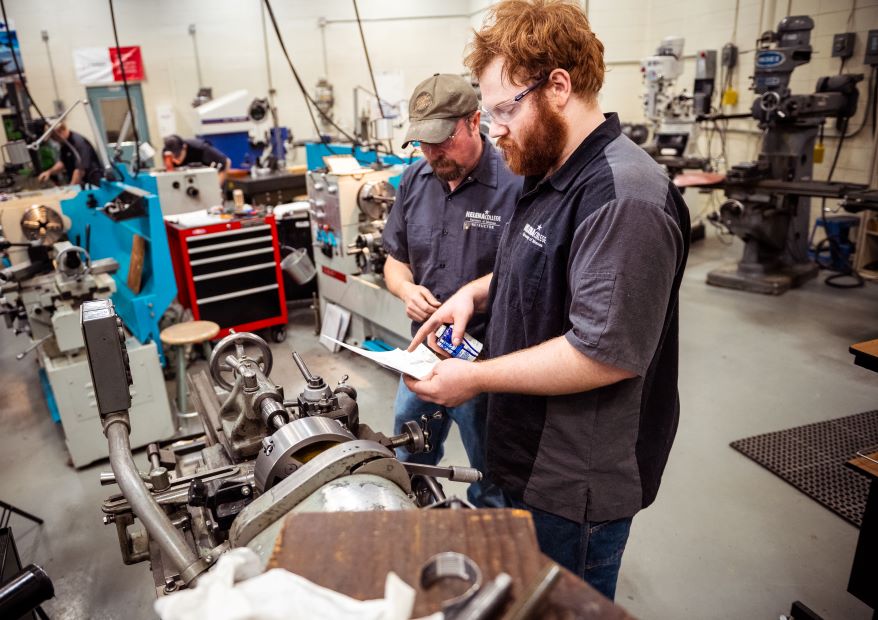Fasteners and Machining: Enhancing the Manufacturing Refine
Fasteners and Machining: Enhancing the Manufacturing Refine
Blog Article
Browsing the Globe of Fasteners and Machining: Techniques for Accuracy and Speed
In the elaborate realm of bolts and machining, the pursuit for accuracy and speed is a perpetual difficulty that requires thorough attention to information and strategic planning. From recognizing the diverse range of fastener types to selecting optimal products that can hold up against rigorous demands, each step in the process plays a critical function in accomplishing the preferred result.
Understanding Fastener Types
When picking fasteners for a task, understanding the different types available is critical for guaranteeing optimum performance and dependability. Screws are utilized with nuts to hold products together, while screws are flexible bolts that can be used with or without a nut, depending on the application. Washing machines are essential for distributing the lots of the fastener and stopping damages to the material being fastened.
Choosing the Right Products
Understanding the significance of choosing the best products is extremely important in guaranteeing the optimal efficiency and integrity of the chosen fastener types went over formerly. When it involves fasteners and machining applications, the material selection plays an essential function in figuring out the total strength, toughness, deterioration resistance, and compatibility with the intended atmosphere. Different materials provide varying homes that can dramatically influence the efficiency of the bolts.
Common products used for fasteners include steel, stainless steel, titanium, light weight aluminum, and brass, each having its distinct staminas and weaknesses. Steel is renowned for its high strength and durability, making it appropriate for a wide variety of applications. Stainless-steel offers outstanding corrosion resistance, suitable for settings prone to moisture and chemicals. Light weight aluminum is lightweight and corrosion-resistant, making it suitable for applications where weight reduction is crucial. Brass is frequently chosen for its visual charm and excellent conductivity. Titanium is known for its outstanding strength-to-weight proportion, making it excellent for high-performance applications. Choosing the best material involves taking into consideration elements such as strength needs, ecological conditions, and spending plan restrictions to guarantee the wanted efficiency and longevity of the bolts.
Accuracy Machining Techniques

In addition to CNC machining, various other precision methods like grinding, turning, milling, and boring play essential roles in fastener manufacturing. Grinding helps accomplish great surface coatings and limited dimensional tolerances, while turning is frequently made use of to create additional resources cylindrical parts with precise diameters. Milling and exploration operations are necessary for forming and creating holes in bolts, ensuring they meet precise requirements and function properly.
Enhancing Rate and Efficiency
To enhance fastener manufacturing processes, it is important to simplify operations and implement effective techniques that enhance precision machining techniques. Automated systems can manage repetitive jobs with precision and rate, permitting workers to concentrate on more complicated and value-added activities. By incorporating these techniques, suppliers can achieve an equilibrium between speed and accuracy, inevitably improving their competitive side in the bolt industry.
Top Quality Control Measures
Executing rigorous top quality control actions is critical in making certain the dependability and consistency of bolt items in the manufacturing procedure. Fasteners and Machining. Quality control procedures include various phases, beginning from the choice of raw materials to the last assessment of the completed fasteners. This includes evaluating factors such as product structure, strength, and longevity to assure that the fasteners fulfill industry requirements.
Regular calibration of equipment and machinery is critical to maintain uniformity in production and guarantee that bolts meet the necessary resistances. Carrying out strict protocols for determining and dealing with non-conformities or problems is essential in avoiding substandard products from going into the marketplace. By establishing a detailed top quality control framework, makers can promote the credibility of their brand and supply bolts that meet the greatest criteria of performance and durability.
Conclusion

In the intricate realm of fasteners and machining, the quest for precision and speed is about his a perpetual challenge that demands precise interest to detail and calculated preparation. When it comes to bolts and machining applications, the product selection plays an essential role in figuring out the total stamina, sturdiness, corrosion resistance, and compatibility with the intended setting. Precision machining involves different innovative methods that guarantee the limited resistances and requirements required for bolts.In addition to CNC machining, other accuracy strategies like grinding, transforming, milling, and like this boring play important roles in fastener manufacturing.To maximize bolt production processes, it is essential to streamline procedures and carry out effective techniques that enhance precision machining techniques.
Report this page